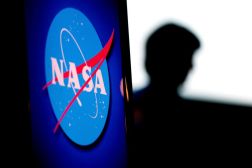New NASA, USAID hub to solve climate-related problems
NASA and U.S. Agency for International Development are partnering to fund a facility in West Africa that will use NASA satellite data to tackle issues like food security and water availability.
SERVIR-West Africa, based in Niamey, Niger, officially opened last week, becoming the fourth NASA-USAID-sponsored center. The hub will be managed by a local group — a subsidiary of the Permanent Inter-State Committee for Drought Control in the Sahel called the Agriculture, Hydrology and Meteorology Regional Center. But NASA could support the group and expand its capacity to use satellite information by explaining available technological resources, or training the group in new technologies.
Tetra Tech, an engineering and consulting company, also announced Monday that they received a $13 million contract to support the group’s efforts.
Dan Irwin, SERVIR global program manager for NASA, told FedScoop that the partnerships are distinctive because they allow local researchers to guide development in their own communities.
“It’s not like NASA’s just going and developing the products,” he said. “But because we have this unique partnership, we’re working hand in hand with the scientists here in the region to develop the products and services to meet these needs.”
Now that the center has been opened, the next step will be for the local organization to meet with different government ministries to determine what the needs are — and how those problems could be addressed using satellite data or forecast models, Irwin said. Some of the big issues in the region are food security and agriculture, water and land degradation.
Irwin said the space agency has an array of satellites that can measure rainfall, soil moisture and changes in land cover from space. Hubs like the one in Niger can opt to use any of NASA’s public data and draw from other sources as well.
“There’s so much data out there … But how do you bring all this data together? And convert data into actionable information that really meets a need?” he said. “And that’s really, I’d say, the hardest part.”
SERVIR serves more than 40 countries, according to a press release.
“What’s really exciting about the model is it’s not just NASA or our U.S. government partners sharing and working with the hubs, but it’s the community of these different hubs now working with each other,” Irwin said. “And I think that’s the huge thing behind the whole model of SERVIR is that it’s really a network.”
He added: “So each of these hubs are developing capabilities for their region and they’re sharing these things with each other and sharing experiences.”
The eventual goal, said Alex Deprez, director of USAID’s West Africa regional office, in a press release, is “African solutions to African problems.”




